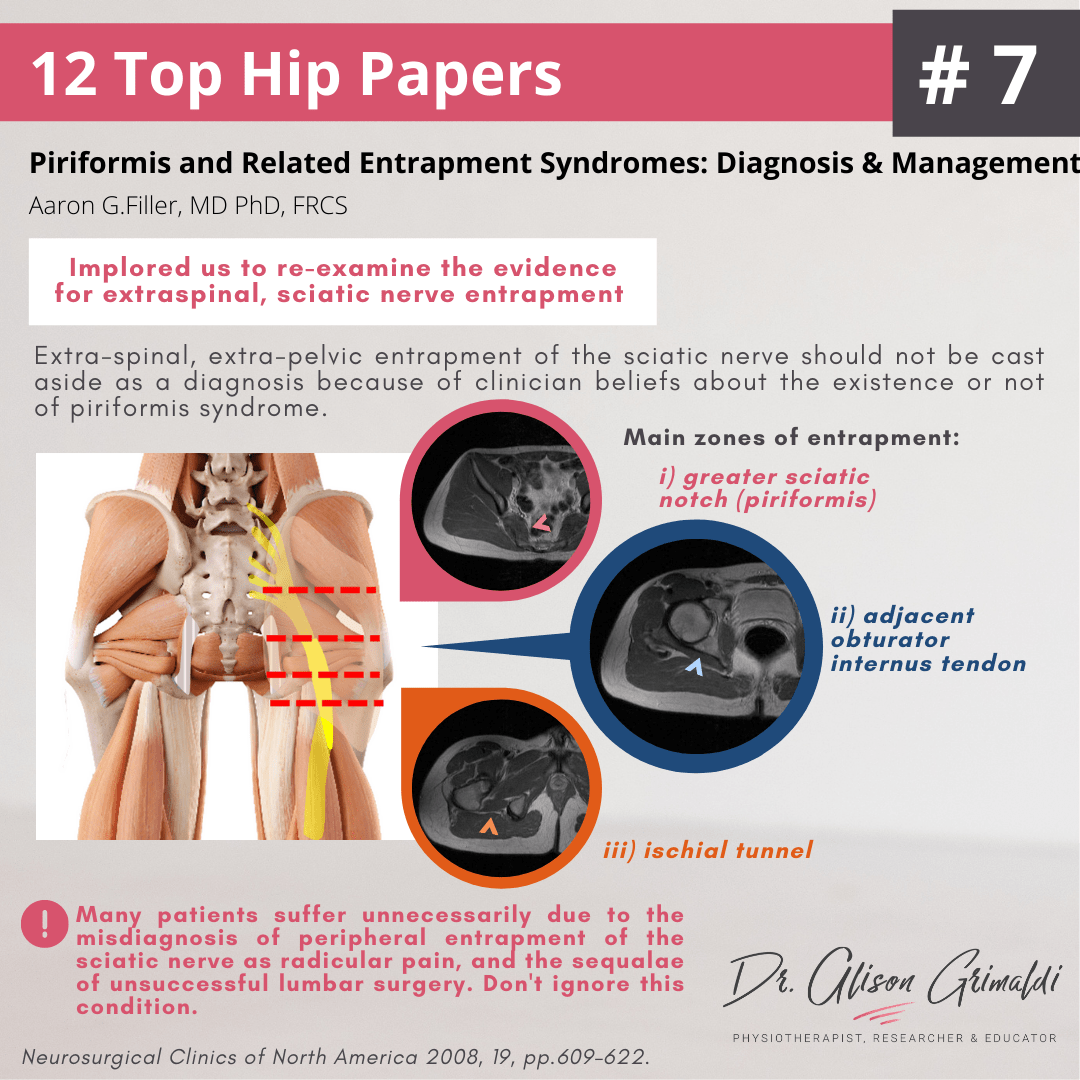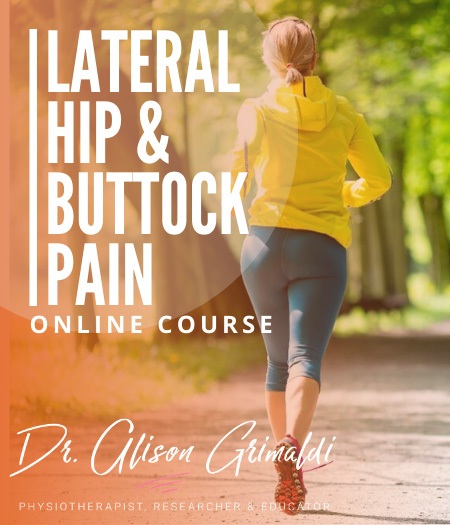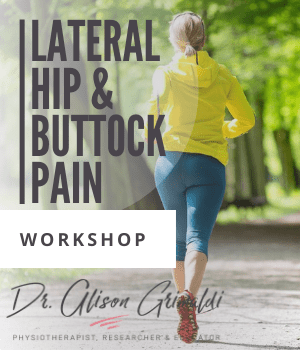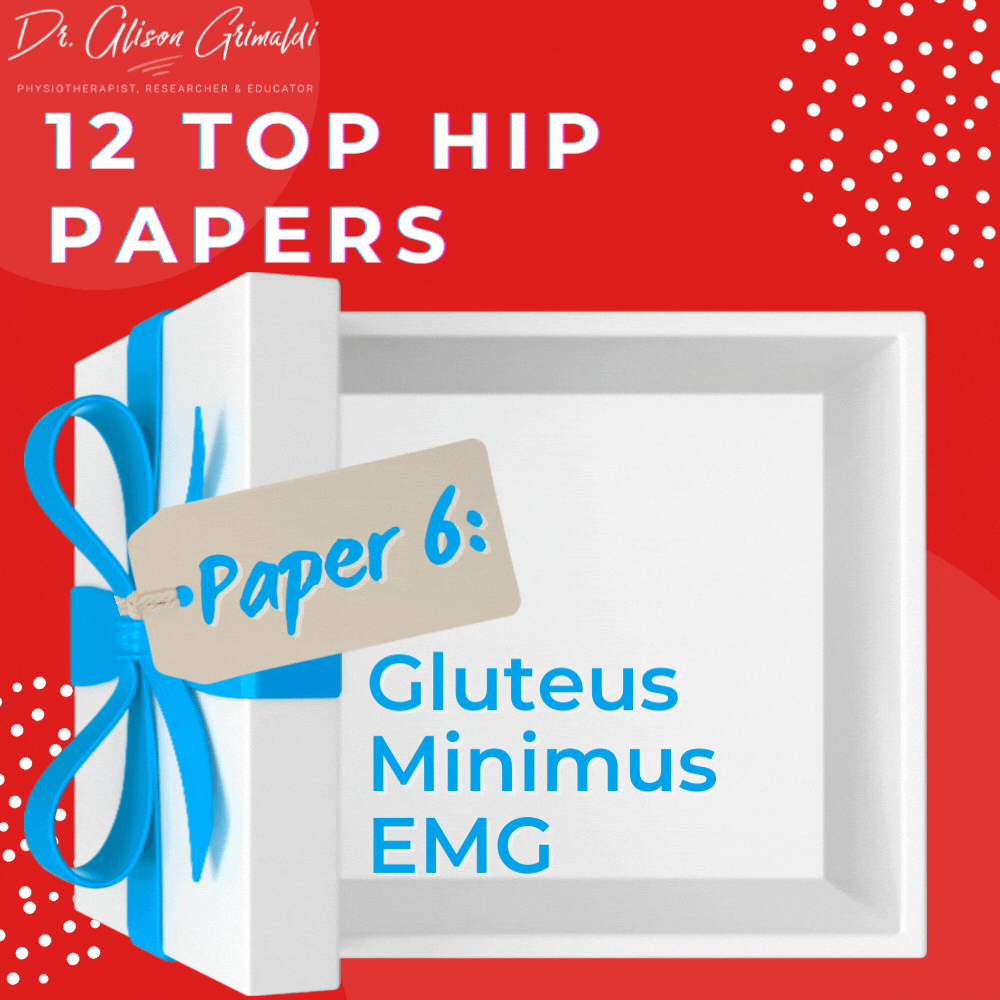7 of 12 Top Hip Papers – Beyond piriformis syndrome

We are on the downhill run to Christmas now - day 7 of my 12 Top Hip Papers miniblog series. If you are just tuning in, you might like to pop back to the main blogpage to find the first 6 posts. So far we have covered some excellent papers on FAIS, acetabular dysplasia, iatrogenic joint instability and muscle function. Now we move on to a couple of papers about nerve related hip pain. Paper 7 was one that really helped in my own understanding on piriformis syndrome and related conditions. The piriformis muscle is one of the most demonised muscles in the body and piriformis syndrome is one of the most misused diagnoses. Read more below about this author's contribution to our understanding or nerve related buttock pain.
Can't make the workshop? Do the Online Course

For your convenience, we have also developed this content into a FREE 26-page full colour ebook!
Packed full of 12 Top Hip Papers - peer reviewed scientific papers that have contributed to our understanding of hip conditions and/or the assessment or management of hip pain or injury.
PAPER 7: Piriformis and Related Entrapment Syndromes: Diagnosis & Management
Aaron Filler bravely published this paper in 2008, defending the diagnosis of 'piriformis syndrome' at a time when there was so much negative emotion around this condition. So strong was this emotion, that piriformis syndrome almost became permanently assigned to the mythologies of clinical practice. This was primarily due to misuse of the diagnosis and to a lack of understanding about the condition and how to assess and manage it. There was such a divide. Some steadfastly ignored the possibility of a local source of nerve irritation in the buttock, attributing all sciatic symptoms to radicular pain. Others seemed to use the diagnosis indiscriminately to label any presentation of buttock pain, regardless of the area of pain or presence or not of nerve symptoms.
This paper was one that I found incredibly helpful at the time to clarify the role of nerve related pain in buttock pain. Filler presents a pictorial account of various presentations of sciatic nerve impingement through the deep gluteal space, using high-quality MRI sequences. He also described the impact of anatomical variations on the course of the sciatic nerve and the potential for impingement of other smaller nerves in this region. While pain is always multifactorial, if structural impingement of a nerve is a factor, a good understanding of the local anatomical relationships may assist in reaching an early diagnosis and facilitating optimal management strategies.

Key learnings about piriformis syndrome:
-
- The evidence suggests that peripheral entrapment of the sciatic nerve in the deep gluteal space does occur, giving rise to local and referred pain
- The diagnosis ‘piriformis syndrome’ should be limited to sciatic nerve entrapment through or under the piriformis muscle
- The sciatic nerve may also be impinged at the level of the obturator internus-gemelli tendon, in the ischial tunnel and by fibrous bands and other structural abnormalities anywhere through the deep gluteal space
- All ‘sciatica’ does not emanate from the lumbar spine. Ensure a thorough differential diagnosis to avoid unnecessary and unhelpful lumbar interventions.
There are many considerations for assessment and management of nerve related buttock pain. If you are findings patients with such presentations difficult to treat, you might like to take a course or benefit from the extended resources available in Hip Academy. See below.

Join Hip Academy Today
Join Hip Academy Today
By becoming a member today you can enjoy the benefits of a world class educational Hip Program, specifically designed by Dr Alison Grimaldi to help improve your knowledge surrounding the Hip and Pelvis, and become an expert in your field.
By becoming a member today you can enjoy the benefits of a world class educational Hip Program, specifically designed by Dr Alison Grimaldi to help improve your knowledge surrounding the Hip and Pelvis, and become an expert in your field.
Like to learn more about assessment and treatment of patients with piriformis syndrome and other nerve-related conditions?
In this course, you can find detailed information on pathoaetiology, assessment and management of nerve-related lateral hip and buttock pain and many other conditions. This course is also included within Hip Academy, so if you are keen to have access to the wider suite of resources, you might like to explore Hip Academy.
Interested in a live workshop on this topic?
Workshop registrations are now open for 2022. If you are in Australia, you might like to attend my face-to-face Brisbane workshops in July 2022. If Brisbane is too far, you might like to join us for an action packed 6 hours (2 x 3 hour blocks) interactive zoom online workshop in July 2022. Both workshops include 3 months access to the online learning course, and the online workshop includes 6 weeks access to recordings.





